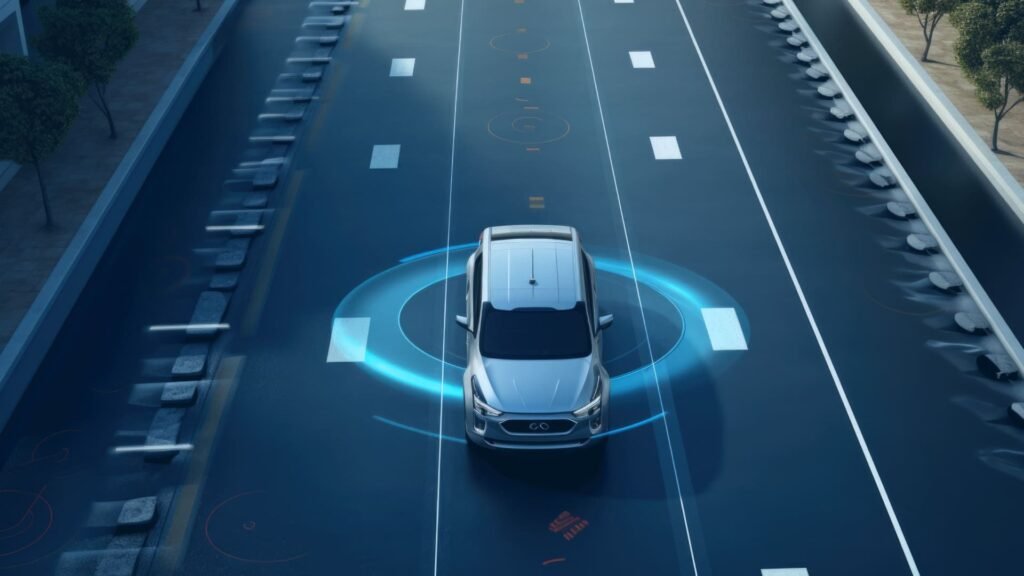Using Advanced Driver Assistance Systems (ADAS)
Using Advanced Driver Assistance Systems (ADAS) is transforming the way we drive, offering a host of features designed to make driving safer and more convenient. These systems integrate various technologies to assist drivers with tasks, reduce accidents, and enhance overall driving comfort. In this article, we’ll explore the key components of ADAS and how they benefit drivers on the road.
What Are Advanced Driver Assistance Systems (ADAS)?
Using Advanced Driver Assistance Systems (ADAS) involves employing a range of technologies that support drivers in various driving conditions. These systems use sensors, cameras, and radar to monitor the vehicle’s surroundings and provide real-time information and alerts. ADAS aims to prevent accidents, improve driving efficiency, and enhance overall safety.

1. Adaptive Cruise Control
One of the most popular features of ADAS is adaptive cruise control. This system automatically adjusts your vehicle’s speed to maintain a safe distance from the car in front. By using radar or cameras, adaptive cruise control monitors traffic conditions and slows down or speeds up as needed. This feature helps reduce the strain of long-distance driving and enhances safety by maintaining a consistent distance from other vehicles.
2. Lane Departure Warning
Using Advanced Driver Assistance Systems (ADAS) often includes lane departure warning systems. These systems use cameras to monitor lane markings on the road. If your vehicle starts to drift out of its lane without signaling, the system alerts you with visual or audible warnings. This helps prevent unintentional lane changes and reduces the risk of accidents caused by drifting.
3. Automatic Emergency Braking
Automatic emergency braking (AEB) is another crucial feature of ADAS. This technology detects potential collisions using sensors and cameras. If the system determines that a collision is imminent and you haven’t responded in time, it automatically applies the brakes to reduce the impact or avoid the collision altogether. AEB significantly enhances safety by helping to prevent or mitigate crashes.
4. Blind Spot Monitoring
Blind-spot monitoring is a key component of ADAS that enhances your awareness of vehicles in your blind spots. Sensors or cameras detect when another vehicle is in your blind spot and alert you with visual or audible warnings. This feature is especially useful during lane changes and merging, helping you avoid accidents caused by vehicles that are difficult to see.
5. Rear Cross Traffic Alert
Using Advanced Driver Assistance Systems (ADAS) also involves rear cross-traffic alert systems. These systems use sensors to detect approaching vehicles from the sides when you are backing out of parking spaces. The system alerts you if there is cross traffic, helping you avoid potential collisions with vehicles that you may not see in your rearview mirror.
6. Parking Assistance
Parking can be challenging, but ADAS makes it easier with parking assistance features. These systems use cameras and sensors to help you park safely. They provide visual guidance and alerts about obstacles around your vehicle, making it easier to maneuver into tight spaces. Some systems even offer automatic parking functions that take over steering, braking, and acceleration during parking.
7. Traffic Sign Recognition
Traffic sign recognition is a valuable feature included in ADAS. This system uses cameras to detect and read road signs, such as speed limits and stop signs. It then displays this information on your dashboard or heads-up display. By keeping you informed of important traffic signs, this feature helps you stay compliant with traffic regulations and improve your overall driving experience.
8. Forward Collision Warning
Forward collision warning systems are part of ADAS that help prevent accidents by alerting you to potential collisions. Using sensors and cameras, the system monitors the road ahead and warns you if it detects an imminent collision with a vehicle or obstacle. This early warning gives you time to react and avoid accidents.
9. Driver Attention Monitoring
Using Advanced Driver Assistance Systems (ADAS) also include driver attention monitoring systems. These systems track your driving behavior and detect signs of drowsiness or inattention. If the system notices that you are not paying attention or are showing signs of fatigue, it alerts you to take a break. This feature helps prevent accidents caused by driver fatigue and distraction.
10. Night Vision Assist
Night vision assist is an advanced feature of ADAS that enhances visibility during nighttime driving. Using infrared cameras, this system detects pedestrians, animals, and other potential hazards that may not be visible with standard headlights. By providing enhanced visibility in low-light conditions, night vision assist helps you stay safe during night drives.
Conclusion
Using Advanced Driver Assistance Systems (ADAS) offers numerous benefits, from improving safety to enhancing driving comfort. With features like adaptive cruise control, lane departure warning, and automatic emergency braking, these systems help prevent accidents and make driving easier. As technology continues to advance, we can expect even more innovative features to become available, further enhancing the driving experience. Embracing ADAS technologies can lead to a safer, more enjoyable journey on the road.

